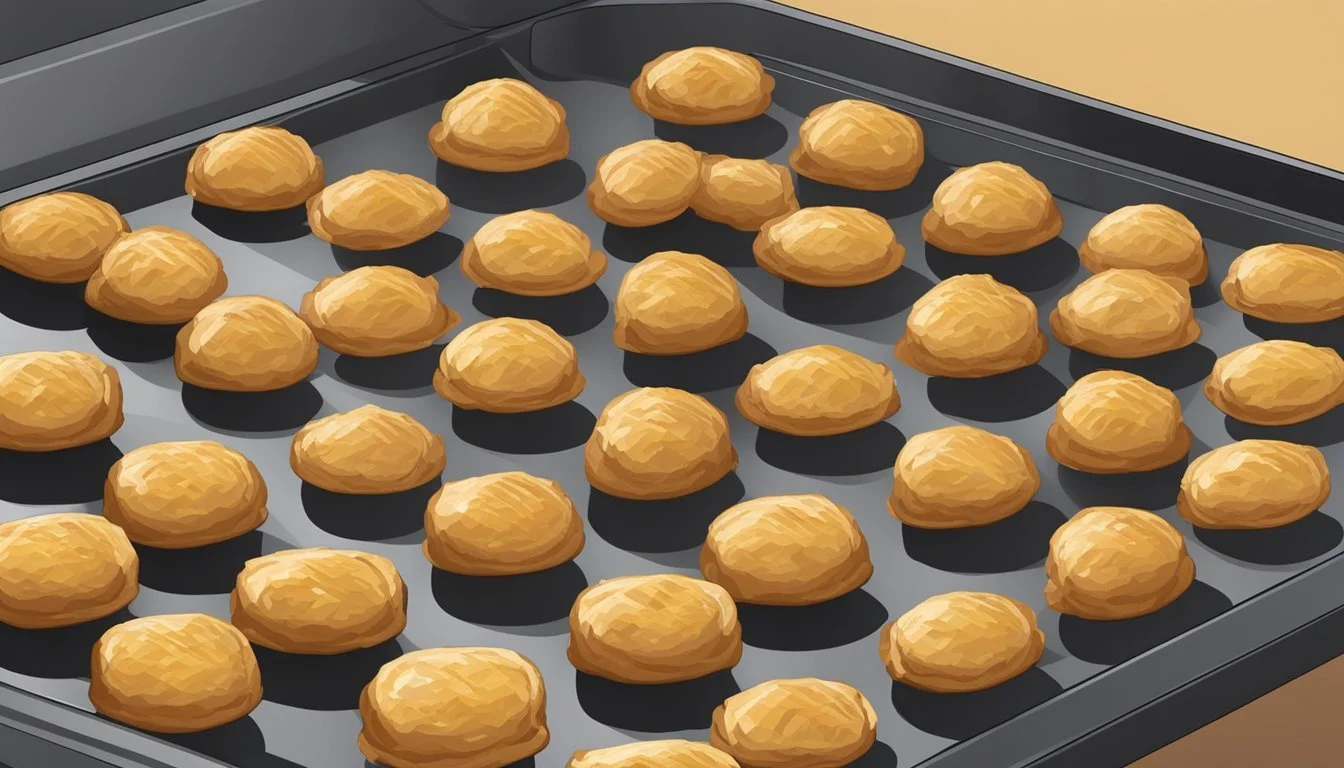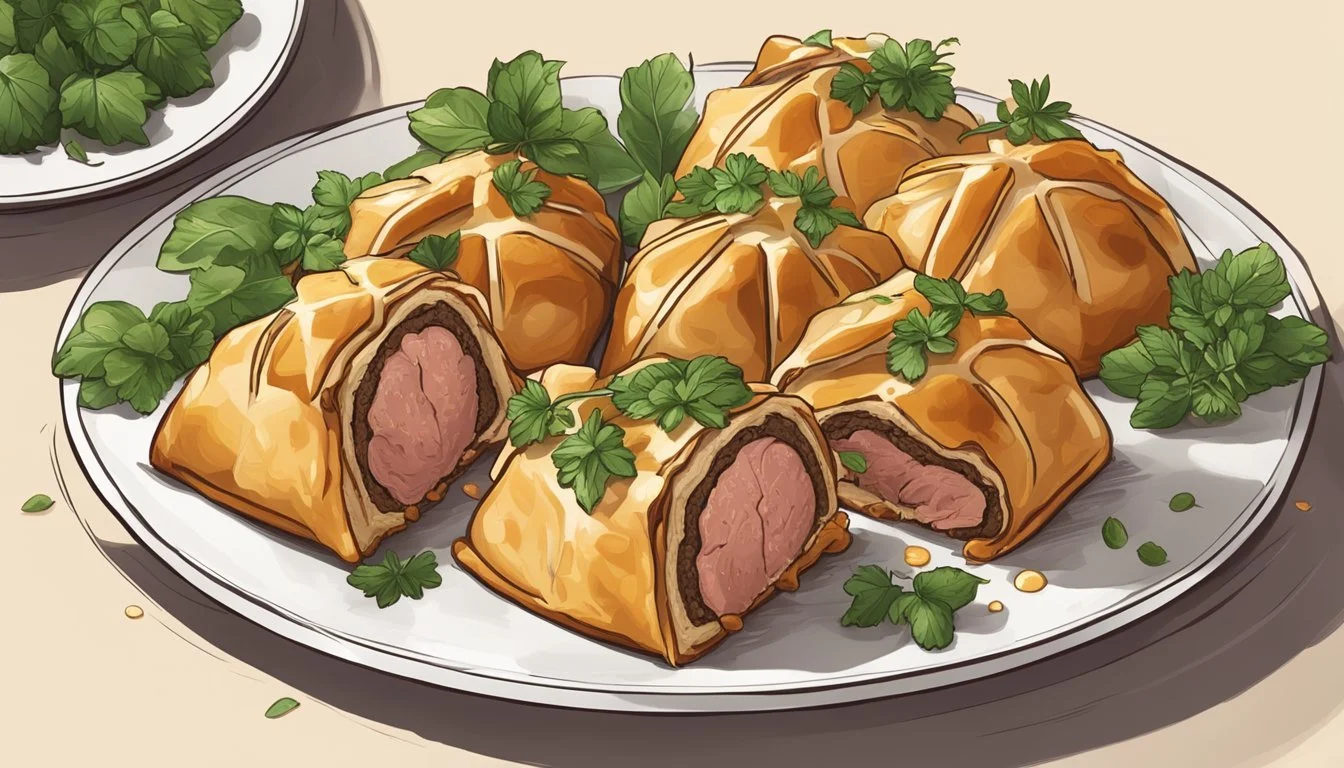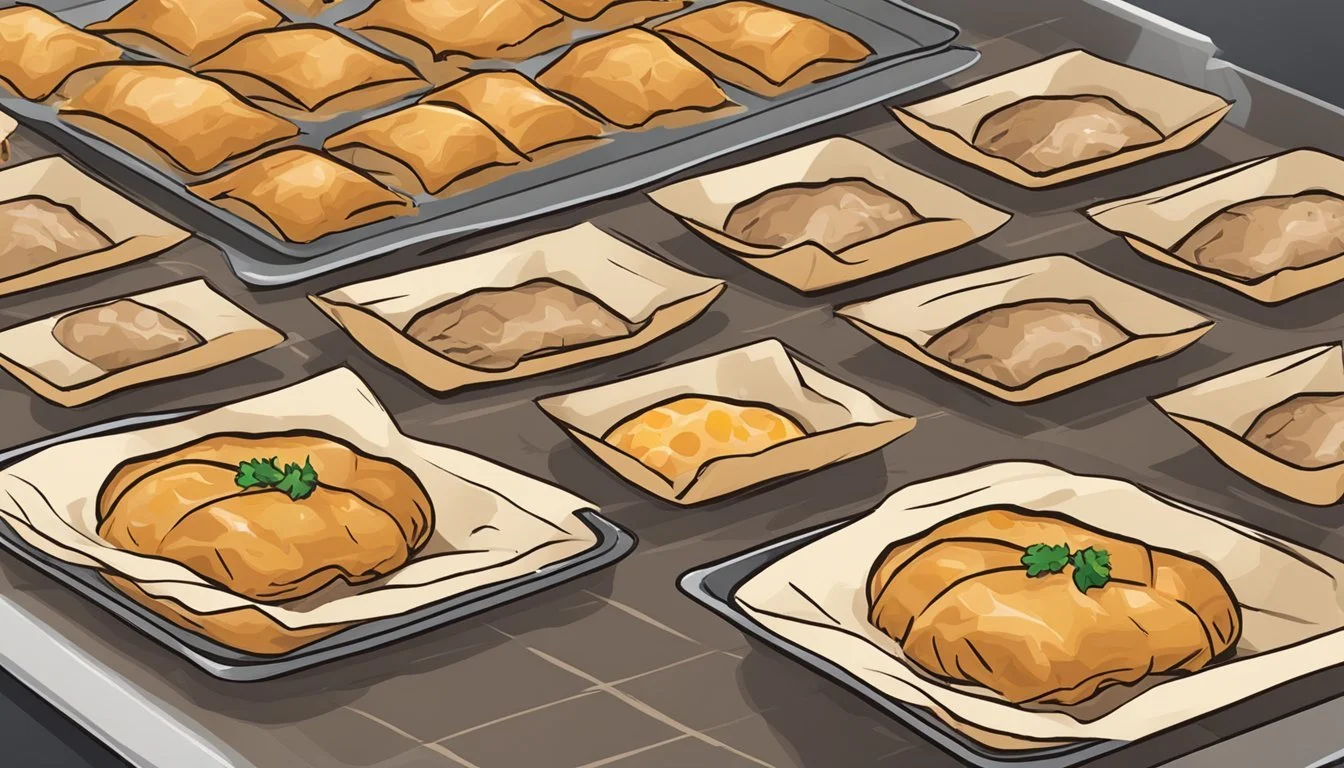How to Reheat Beef Wellington Bites
Expert Tips for Perfect Results
Reheating Beef Wellington Bites doesn't have to be a mystery. These delectable morsels can be enjoyed as if they were freshly made, with the right reheating method. The key to successfully reheating Beef Wellington Bites is to preserve the moisture of the meat and the crispiness of the pastry.
Various methods can be employed to achieve this, such as using an oven, air fryer, or even a stovetop pan. Each technique has its unique benefits and can ensure your Beef Wellington Bites are just as satisfying as when they were first cooked. Proper temperature control is crucial to avoid drying out the beef.
For an oven approach, placing the bites on a baking sheet lined with parchment paper and reheating at a low temperature can help maintain their integrity. Alternatively, using an air fryer set to a moderate temperature can also achieve excellent results.
Understanding Beef Wellington
Beef Wellington is a classic dish known for its rich flavors and complex preparation, featuring tender meat encased in puff pastry and enhanced with layers of flavorful fillings.
Key Components of Beef Wellington
Beef: The centerpiece is typically a beef tenderloin or filet mignon, prized for its tenderness and mild flavor. The meat is often seared to develop a deep brown crust, enhancing the taste.
Puff Pastry: This flaky, buttery pastry encases the beef and seals in the juices. It adds a delightful crunch and contrasts with the tender meat inside.
Duxelles: A finely chopped mixture of mushrooms, onions, garlic, and herbs sautéed in butter. This mixture adds an earthy, savory flavor and prevents the pastry from becoming soggy.
Pâté: Traditionally, foie gras pâté is spread over the duxelles. It enriches the dish with a creamy, luxurious texture.
Crêpe: A thin pancake is sometimes used to wrap around the beef and fillings to contain moisture, ensuring the puff pastry remains crisp.
Ideal Doneness for Beef
Achieving the right doneness is crucial for the perfect Beef Wellington. The internal temperature should guide this process.
For a medium-rare doneness, aim for an internal temperature of 125-130°F (52-54°C). This level ensures the beef remains tender and juicy.
It’s important to use a meat thermometer. Insert it into the thickest part of the beef to get an accurate reading.
Resting: Once removed from the oven, the Beef Wellington needs to rest. This step allows the juices to redistribute throughout the meat, enhancing the overall flavor and texture.
Preparation for Reheating
Reheating Beef Wellington bites requires careful attention to temperature and preparation to preserve their texture and flavor. This section outlines the steps you need to take to ensure the best results.
Preheat the Oven
Start by preheating your oven to the necessary temperature. For Beef Wellington bites, set the oven to 250°F (120°C) if they are thawed or 400°F (200°C) if frozen.
Ensure your oven thermometer is calibrated correctly, and consider using an oven thermometer probe to monitor the internal temperatures accurately.
If thawed, once the oven reaches 250°F, you can place your bites inside. If frozen, begin at 400°F for a brief period before reducing the temperature to 250°F to finish reheating.
Setting Up the Reheating Environment
You will need a baking sheet lined with parchment paper for reheating in the oven. Place a wire rack on top of the baking sheet to allow for even circulation of heat around the Beef Wellington bites.
Cover the bites tightly with aluminum foil to retain moisture and prevent overcooking. This setup ensures even reheating and maintains the integrity of the puff pastry and the meat.
Monitor the internal temperature with a meat thermometer, aiming for approximately 130°F (54°C) for medium-rare quality.
Bringing Beef Wellington to Room Temperature
Before reheating, it’s crucial to allow frozen Beef Wellington bites to come to room temperature. This step prevents uneven reheating and helps preserve the pastry's texture.
Remove the bites from the freezer and let them sit on the counter for about 30 minutes.
This practice ensures that the meat inside warms up gradually, reducing the risk of the puff pastry becoming too dry or soggy during the reheating process.
By following these steps, you can achieve perfectly reheated Beef Wellington bites that are both flavorful and delicately textured.
Reheating Techniques
Reheating Beef Wellington Bites requires careful attention to temperature and methods to ensure the pastry stays crisp while the meat remains juicy. Here are several ways to achieve the best results using common kitchen equipment.
Oven Reheating Method
To reheat beef wellington in the oven, preheat it to 250°F if fresh, or 400°F if frozen. Place the wellington bites on a baking tray lined with parchment paper. For added moisture retention, cover the tray with aluminum foil. If starting at a higher temperature for frozen bites, reduce to 250°F after 15 minutes. Use a meat thermometer to check the internal temperature, aiming for around 130°F for desired doneness. This method ensures the meat warms evenly and the pastry remains flaky.
Stovetop Reheating Strategy
Using a stovetop and skillet is another effective way to reheat beef wellington. Heat a small amount of oil and butter in the skillet over medium heat. Once the butter is sizzling, place the wellington bites in the pan. Heat each side for about 2-3 minutes, ensuring not to overcrowd the pan to keep the crust crisp. Check the internal temperature before serving to ensure the bites are heated through to at least 75°C (165°F).
Microwave Reheating Options
For a quicker option, the microwave can be used, though this may affect the texture of the pastry. Place the wellington bites on a microwave-safe plate and cover with a damp paper towel to help retain moisture. Microwave on medium power for 1-2 minutes, checking frequently. Avoid overheating, as this can make the pastry soggy. The internal temperature should reach at least 75°C (165°F) for safe consumption.
Air Fryer Reheating Tips
The air fryer offers a balanced approach, providing heat while maintaining crispiness. Set the air fryer to 250°F (120°C). Lay the beef wellington bites in a single layer with the cut sides down. This method usually requires about 10 minutes. Ensure the bites don’t touch to avoid sogginess. For best results, let the bites rest for 30 seconds after reheating to settle the juices before serving. This method effectively reheats while preserving texture.
Avoiding Common Reheating Pitfalls
When reheating Beef Wellington bites, careful attention is necessary to prevent issues such as soggy pastry, loss of moisture in the meat, and uneven heating. Following specific tips helps ensure the dish retains its quality and appeal.
Preventing a Soggy Pastry
To prevent the pastry from becoming soggy, use aluminum foil to cover the Beef Wellington bites loosely. This shields the delicate pastry while allowing moisture to escape. Creating small vents in the foil can further help. Preheat the oven to 250°F (120°C) and place the bites on a wire rack over a baking sheet. This setup ensures the heat circulates evenly around the bites, keeping the pastry crisp.
Avoid using the microwave since this method tends to trap moisture, resulting in a soggy texture. For smaller portions, reheating in an air fryer set to 250°F (120°C) is efficient. Place the bites in a single layer to maintain their flaky texture without trapping too much steam.
Maintaining Moisture in the Meat
To keep the meat tender and moist, consider lightly basting the Beef Wellington bites with melted butter or olive oil. This not only adds flavor but also helps maintain moisture levels. If using the oven method, preheat to 350°F (175°C) and reheat for 10-15 minutes only until the internal temperature reaches 145°F (63°C).
For stovetop reheating, melt a small amount of butter over medium heat in a non-stick frying pan. Place the bites cut side down and gently heat for a few minutes on each side. Check the temperature using a meat thermometer, aiming for a minimum of 75°C (165°F).
Ensuring Even Reheating
Ensuring the Beef Wellington bites reheat evenly is crucial to avoid cold spots. Use a wire rack to lift the bites off the baking sheet, promoting even airflow. For even microwave reheating, use a microwave-safe plate and cover lightly with a paper towel. Rotate the plate halfway through the reheating process.
When using an air fryer, space the bites evenly in a single layer. Periodically check and reposition them if necessary to ensure each piece warms up correctly. Avoid stacking the bites, which can lead to uneven heating and a mix of overcooked and undercooked areas.
Post-Reheating Tips
Proper handling and serving after reheating are key to preserving flavors and textures. Ensuring the Beef Wellington bites rest appropriately before serving can help maintain their crispness and overall quality.
Resting Time After Reheating
After removing the Beef Wellington bites from the heat source, it's important to let them rest for a few minutes. This brief resting period allows the juices to redistribute throughout the meat, enhancing flavor and tenderness. Without this step, the bites may lose moisture and become less palatable.
Place the bites on a wire rack to maintain the crust's crispness. Avoid stacking them, as this can cause steam and soften the crust. A resting time of about 3 to 5 minutes is recommended.
Serving Suggestions
Pairing Beef Wellington bites with the right sides can elevate the dining experience. Consider serving them with mashed potatoes for a comforting, creamy contrast. A crisp salad with a light vinaigrette balances the rich, savory flavors of the beef.
For a refined touch, drizzle a bit of gravy over the bites, enhancing their succulent taste. Complement the dish with a glass of red wine, which pairs well with the beef's robust flavor. The combination of these elements will provide a well-rounded meal with diverse textures and tastes.
Proper Storage Practices
To maintain the freshness and flavor of Beef Wellington Bites, proper storage is essential. This involves appropriate cooling, storing, freezing, and thawing methods.
Cooling and Storing Leftovers
Leftover Beef Wellington should be cooled quickly to prevent bacterial growth. Place the bites in a shallow container to speed up the cooling process. Cover the container loosely to allow steam to escape until the food cools to room temperature.
Once cooled, store the leftover Beef Wellington in an airtight container. Refrigerate at 40°F (4°C) or below, and consume within 3 days. Keep any leftover sauce separate in another airtight container to maintain its quality.
Freezing and Thawing Beef Wellington
To freeze Beef Wellington Bites, first ensure they are completely cool. Wrap each bite tightly in plastic wrap to prevent freezer burn. Place the wrapped bites in a freezer-safe bag or container. Label with the freezing date and use within 2-3 months for best quality.
For thawing, transfer the frozen Beef Wellington bites to the refrigerator. Thaw slowly over 24 hours to maintain texture and flavor. Avoid thawing at room temperature to prevent potential bacterial growth. Once thawed, reheat as desired and enjoy.






